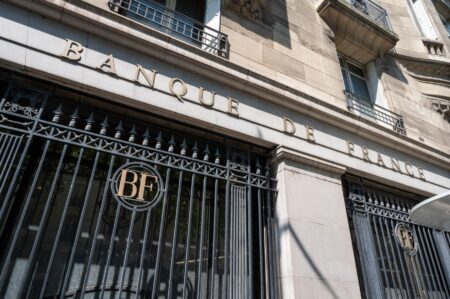Stablecoin infrastructure platform BVNK has announced that it has received investment from Visa Ventures, in a key vote of confidence for the future of stablecoins in the payments industry.
The first time Visa has directly invested in a stablecoin payments infrastructure player, it follows a variety of other stablecoin-related partnerships by Visa as it works to connect its ecosystem of around 4.8 billion cards, 150 million accepting merchants and 14,500 financial institutions with the crypto ecosystem.
“Our job here is to make sure that we are building to where consumers want to go, and BVNK is another example of where we believe the industry is headed,” says Rubail Birwadker, Visa’s Head of Growth Products and Partnerships.
Coming as the UK-headquartered BVNK is building out its presence in the US, the investment follows BVNK’s December 2024 Series B round, where it raised $50m from investors including lead Haun Ventures, as well as Coinbase Ventures, Avenir and Tiger Global. However, this latest deal not only brings credibility for the stablecoin player, but also helps it increase penetration with Visa’s enterprise partners.
“This is really powerful validation from the world’s largest payment network that stablecoins are the next chapter of global payments,” says Chris Harmse, Co-Founder and Chief Business Officer, BVNK.
BVNK’s role in the stablecoin industry
Processing $12bn annualized volume, BVNK is a fast-growing player that has built out its business by enabling domestic and cross-border payments using stablecoins for Tier one banks, leading fintechs and enterprises, without companies needing to directly deal with blockchain technology and its related challenges.
“Think pay-ins, pay-outs, business-to-business (B2B), business-to-consumer (B2C), all of that, with super easy APIs that abstract away all of the complexity of talking to blockchains and making those swaps between the fiat and blockchain world,” explains Harmse.
On the B2B side, this has seen BVNK work with merchant acquirers such as dLocal, Rapyd and Trust Payments to settle with their merchants using stablecoin. Meanwhile, on the B2C side BVNK has worked with platforms such as global payroll player Deel, through which growing numbers of workers are opting to be paid in US dollar-backed stablecoin. Payment service providers, which facilitate payouts from marketplaces, are also seeing similar demand from their customers.
“I have users globally in 85 markets around the world that do not want to receive payment in their local currency because of multiple economic reasons,” he adds.
“Now you’re giving them access to dollars instantly into a wallet that they can spin up in a permissioned or non-permissioned way.”
Beyond the direct payments applications, however, BVNK is also increasingly making its infrastructure directly available through Layer1, its 2024-launched digital asset payments infrastructure solution. Described by Harmse as “hyper optimized, stablecoin core banking stack”, this is a productized version of BVNK’s own operating infrastructure that companies can use to build their own products and solutions on top of.
Beyond this, it also recently launched its third product pillar: embedded wallets that “come out of the box stablecoin enabled”.
For Visa, BVNK’s product range is an example of a growing landscape of solutions “built by very smart people around the industry” to support cross-border commerce.
“There’s a lot of room for new tools and treasury services and orchestration layers that are going to be built by companies,” says Birwadker.
“We think BVNK is doing a great job and we like the team, so when the opportunity came up, we thought having more of an influence as an investor would be the right thing for us to do.”
Visa’s evolving stablecoin strategy
Visa’s interest in digital currencies is by no means new, with the company’s earliest partnerships in the sector having started more than half a decade ago, particularly focused on developing on and off-ramps between fiat and crypto. This has included issuing crypto-linked cards and making it possible for users to purchase cryptocurrencies with Visa credentials.
However, its efforts in the stablecoin space in particular have stepped up recently. While it was already enabling settlement in stablecoin USDC for players such as Crypto.com, its recent Product Drop included the announcement of several new stablecoin partnerships, including a collaboration with Stripe’s Bridge that will enable developers to offer stablecoin-linked cards.
This comes as the company sees growing demand to hold and use stablecoins, with Circle’s USDC stablecoin recently passing a $62bn market cap for the first time, but also as the technology has become far more accessible.
“It’s getting a little bit more simplified and becoming more part of everyday usage because consumers are not really thinking about the technological hoops that they need to jump through in order to hold a digital asset,” says Birwadker, adding that increased regulatory clarity, particularly in the US, is also helping.
“With better regulatory clarity, it’s simpler for people to build on things that they understand our local regulatory authorities are comfortable with.”
The investment in BVNK therefore comes as Visa is increasingly looking to infrastructure to build out its stablecoin capabilities, including for what Visa’s Head of Crypto Cuy Sheffield has previously referred to as a “stablecoin sandwich”, where stablecoins are used as the middle part of payments sent and received in fiat currency.
“Because we’re trying to bring about a world that uses this better [stablecoin-based] payments infrastructure, Visa saw that we could accelerate specifically around their stablecoin payments use cases, whether that be stablecoin payouts, whether that be the stablecoin sandwich, whether that be stablecoin settlements,” says Harmse.
Stablecoins’ potential payments impact
Following first card networks and later the advent of the modern fintechs, stablecoins are being framed as a technology that is set to radically transform the payments landscape.
“It’s been slowly creeping its way in over the years, but it’s getting to the point now where this is really a new payments infrastructure that’s rivaling some of the existing ones today,” says Harmse.
“It has the best potential to be that global rail that we’ve sorely been lacking over the last 25 years in payments.”
Some of this potential is due to the speed – near-instant – and availability – 24/7 – of the technology, as well as its consistency globally.
“Domestic payment rails today are all innovating at different paces. The only way to connect them together today is Swift and the correspondent banking infrastructure we have today. Stablecoins are now an upgrade to that infrastructure,” he adds.
However, there are often misconceptions about where both its benefits and setbacks lie. For example, despite common perception, stablecoins and the blockchain on which they are moved are not the only means of providing instant settlement for cross-border transactions. But Harmse says that there are also considerable misconceptions around the transparency of blockchain technology used to facilitate stablecoin-based payments.
“People think, ‘blockchain’s pseudonymous, we can’t see anything, it must be obfuscated away’, but actually when you look under the hood, it’s way more transparent than fiat payments,” he says, adding that it has significant advances over traditional correspondent banking-connected solutions.
However, Birwadker sees potential in the global nature of stablecoins, which are already seeing elevated popularity in countries where there is high volatility in their local fiat currency, to bypass the need to settle in multiple currencies and instead retain value in a single-currency-backed stablecoin.
“We think something like a stablecoin infrastructure is really modernizing how traditional money moves, especially large parts of sums of money between banks that move to the corresponding banking ecosystem,” he says.
In the long run, however, he sees solutions such as BVNK’s Layer1 underpinning broader use case transformations.
“As more and more consumers hold stablecoins in their wallets, they’re going to want to use them in many, many different ways,” says Birwadker.
“We’ll see how that goes, but we are pretty excited about the various things that are being developed.”
Read the full article here










